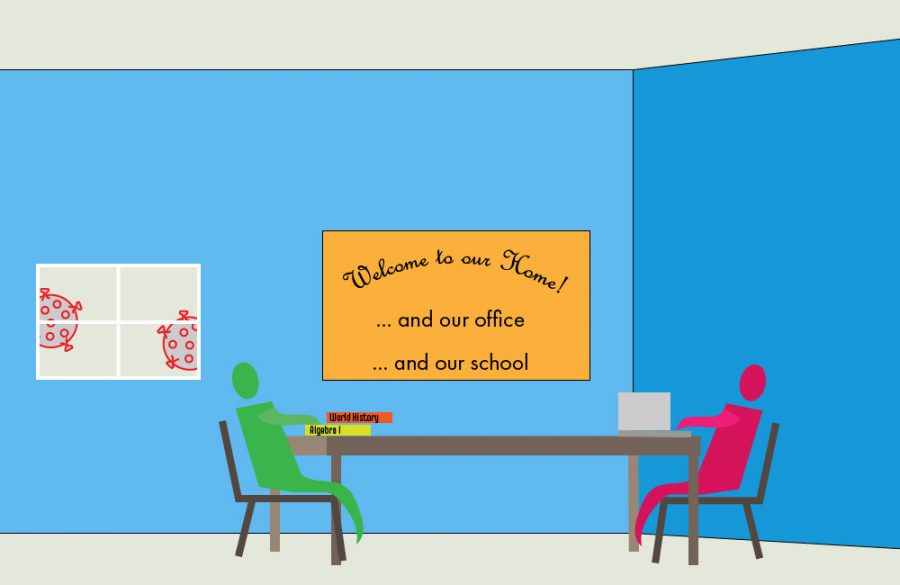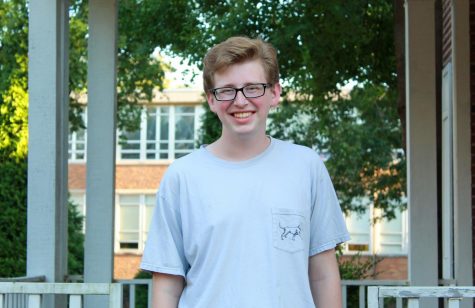How COVID-19 uncovered the flaws of an already broken system
Due to COVID-19, many families have had to stay at home together and continue with school and work virtually.
January 27, 2021
Class divide is nothing new, but as lockdowns and quarantines became the new normal, many issues we have ignored are becoming more and prevalent. The difference between social classes is more obvious than ever.
Across the nation, we’re seeing more and more people struggling to pay their bills with 6.7% of American’s out of work as of December 2020 compared to 3.5% in January 2020. Aside from the obvious layoffs and furloughs, there are people who are stuck at home when their children can’t go to school because of remote learning or because someone in their household got exposed to COVID-19. A total of 44% of lower income Americans have had to use funds from their retirement and/or savings to make ends meet, and 32% have had trouble paying their rent or mortgage.
Not all parents can even afford to stay home when needed. There are parents having to make the decision to leave their children home alone to face the difficulties of online school on their own.
Many of these kids are having to deal with the challenges of remote learning with elementary and middle schoolers having to go as far as to teach themselves when they have WiFi difficulties. There are students who are having to do school work on smartphones and hoping they have enough data to fulfill all of their requirements. Households with more than one school-age child are having to find alternatives to help their children meet all of the requirements of online learning when they don’t have strong enough WiFi to support their course loads.
According to a study done by Cornell University sociologist Hope Harvey, 20% of children were found to be living in shared households of up to three generations and found that 50% of children living in urban areas would live in doubled-up housing by age nine. Disregarding the adverse effects of the pandemic, living in a doubled-up household has its own set of problems such as the increased risk of conflict and resentment over members of the house feeling like they have little control over things. This does not even take into consideration how families are having to adapt to everyone being home at the same time.
Having more people in one house makes one person getting sick significantly more serious as well. Lower income families are likely to have smaller homes because it’s what they can afford, which means that quarantining from the rest of their family is not much of an option. All they have left is the hope that no one else contracts the virus so the heads of their household can continue working to take care of the family.
Another major problem that wealthier people are overlooking is food. With more people unable to go to school or work, heads of households are having to make sure that the people at home get three meals a day. According to Feeding America, “22 million kids rely on the National School Lunch Program for free and reduced-priced meals,” and many of these families depended on the program to provide breakfast and lunch for their children.
More people at home also means that utility bills are going up. With people unable to work and go to school, houses are constantly running. Lights are on, devices are running and money is having to pay for it all. Multigenerational and large households have more people running utilities, and many of these people are not able to pay for that.
The irony of this all is how many essential workers are underpaid workers. There are housekeeper aides at healthcare facilities, fast food workers and retail workers whose jobs cannot be made virtual, and if they are unable to come to work, they risk losing their jobs and livelihoods. We’ve been screaming that minimum wage is not a livable wage for years, and we’re now seeing how drastic the consequences are. The working class is suffering more than white-collar workers who can do their work remotely. They are putting themselves at more of a risk by going to work, and when they inevitably are exposed to COVID-19 they are more negatively affected by not being able to go to work.
On the other hand, celebrities and rich people alike are viewing quarantines as a time to better themselves, try new things and pick up new hobbies. They are not having to deal with the burden of not being able to feed their children or pay their bills. They are living in an entirely different environment than low income families. Miley Cyrus is one such person speaking out about her privilege. In an interview, she told The Wall Street Journal that what she is experiencing “isn’t COVID-19.” She acknowledges that she has no idea what it’s like to have to worry about what the pandemic means for her financial security. She says that she is “comfortable in [her] space” and that it has all been more of a pause in her life than a serious problem.
Lower class families have been struggling for almost a year due to COVID-19. Unlike the upper classes, they are less likely to have enough savings to support having their full household at home all of the time. They are struggling to provide basic necessities. These people have the most to lose by getting sick, but they are the ones who have to put themselves at risk because they can’t afford to not go to work. Problems that were mere inconveniences last January have grown into issues that threaten a person’s entire livelihood and as a society, we need to find a way to prevent situations like this from happening in the future.
Editor’s note: The author of this piece asked for their name to be removed due to safety issues following their graduation.









